Don't wanna be here? Send us removal request.
Text
04.29.20
It is a shame that our class was cut too short, but I think everyone in our class put in a lot of effort for each of these assignment while in quarantine! I was very scared coming into this class, because digital photography scared me... like a lot. I was mostly nervous about the Adobe softwares wed be using because in the past I found them very difficult to use, but I was never properly trained, so that probably why lo. I am so glad I took this class, because I know that the skills I learned are going to help me in the future. I am really excited for this summer because I will probably be shooting in bnw film, digital, and producing many cyanotypes!
I’ve recently been informed to research Doug and Mike Sharn, they are two brothers that produce alternative process pieces. I am so interested in how they create such humungous works, and that is something I plan on doing, maybe not as big as their, but big enough for me lol.
From my last critique, I learned that I could get more highlights and contrast from the ice if I used a glass bowl, rather than an opaque bowl. I think the results will make a huge difference. Especially because the glass bowl already had crystal like features, just like ice, and it might have an infinite look in the end result.
0 notes
Text
04.22.20
I think for my final portfolio, I want to include something from each assignment, because I felt I put a lot of effort into each of them. This is my first time taking a Digital Class, and I think the knowledge I gained about Lightroom and Photoshop allowed to create a better image overall. So I would like to show those images where I felt I edited to the best it could be. Im thinking of using images from my Portrait assignment, my nigh photography assignment and my photo essay assignment. I think I used a lot of the skills we learned in class for each of these assignments. I plan on making them all black and white.
I think taking two photography classes at once, allows me to bounce off ideas I have for each class. Remaining creative during quarantine can be challenging at most times, but something always come too.
I’m currently looking at the photographer Andrew Bush. He has a series called Vector Portraits and basically what he does is, take pictures of people while they are driving around in Los Angeles. He mounted a medium format camera on the passenger side of his car, and drives around the city. I love the narrative; we are all trying to get somewhere, the viewer wonders where they are going and where they are coming from. We are free but at the same time we are not because we are trapped inside the car.
(I have also not been critiqued yet)
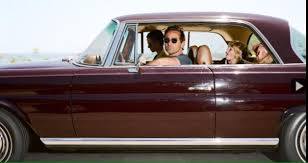
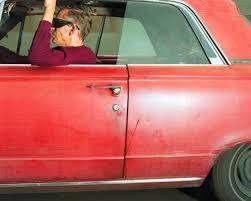
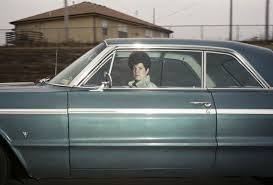
0 notes
Text
04.08.20
Cannot believe it is week twelve of our class. It is kind of sad that we will just end our class with pressing the “leave meeting button” on Zoom. Creating and talking about photographs over the computer is really difficult, because mediums like this are really important to be in the same space when you are viewing them. Speaking of space, I can feel that I want to create a bunch of art, but I think being confined in a space really slows that process. The feeling I get when I get an idea to capture or make is the same feeling when you haven’t seen your dog in a long time, or the feeling you get when you get back a test and you did better than you thought. Feeling accomplished is the best feeling in the world, and I achieve that through completing a piece or a series, etc. I feel that I am trying to do the same thing for each photo class, like the assignments have the same theme, and it is hard to create new ideas with the same result. I thin while trying to complete this photo essay, I got drawn back to my orignial idea of gas stations. So I might go out and take digital photos of them one night and see if I can get the same result I wanted when I was taking them on film.
I got really inspired by last class discussion on documenting quarantine through photography, so I went out and did my own version. I wanted to document my own family. So I went to my aunt and uncles house and did a photoshoot with them. I plan on taking more with my intermediate family, my neighbor who is like family. Most of my other family members live pretty far, but I was really happy with these results!


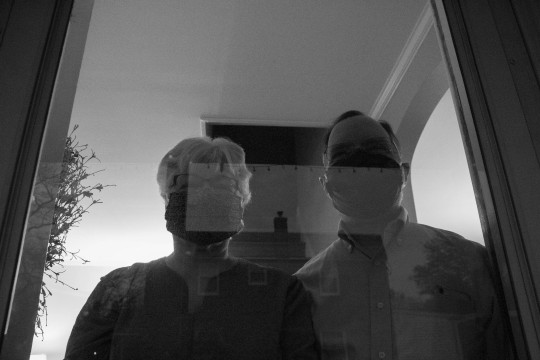


0 notes
Text
04/01/2020
Day 379 in Quarantine
It feels like I have been in my house for 379 days. Some patterns I see emerging: I find that everyone is a little bit more irritable. Everyone is in each others space, my mom is working from home, my brother and I have classes online every day. (The Wifi is definitely being used) It reminds me of the scene in Seinfeld when Elaine thinks she has rabies and is reading off the symptoms from a book. I think everyone in my family is still adjusting, except my dog, he loves that everyone is home! Regarding photography, I feel that since I am confined, my thoughts are confined. Creativity is running on the low side, but I am trying all the time to create something new. The other day I complete a 30x40 painting! For my ice cube photo essay: it is difficult to freeze water because of the limited space in my freezer. It is almost always packed, so I am eating a lot from it so that I can fit ice cube trays. I made my own backdrop, with a single sheet of paper, to allow for that infinite look. I think what I need to try; put the ice cubes on a tray, so that when they melt, I can freeze them as is, and then capture that.

I made an Obscura the other day, and I feel that the results really reflect on the loneliness I know I feel being confined in my home, and I'm sure lots of others do as well.
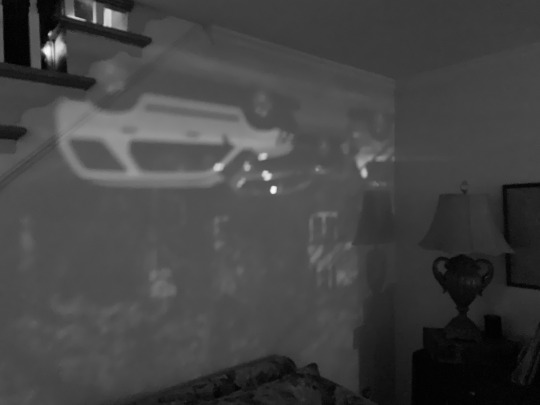


0 notes
Text
03/25/20
For my photo essay, I have been thinking about some ideas. I've been drawn to the idea of melting water. I don't know why this came to me but, I tried to further my thoughts about it. I thought that if you have an ice cube, it's in a solid-state, its string, and it hasn't started to melt yet, so the excess water or the new sate that it will be in, has not happened yet. But as time goes on, we see that it loses strength its original form, and it's not going to be its original form unless an outside force, like a freezer, will bring it back to a solid-state, but won't be in its original form. As time goes it will eventually be a puddle of liquid water. It has so form, it has no strength. I wanted to look at this melting ice cube as a metaphor for one's wellbeing and mental state, considering our circumstances right now. Going into this quarantine we were strong and solid, and as time goes on we lose a little bit of form, and we start to drift from our daily routines and whatnot. I think its safe to say that pretty soon we will at times feel like a puddle. We don't feel motivated to become our original form, and it's hard to even start that. But the point is, even when we “freeze” again, we will be solid, but we will look a little different, and we will not look like that perfect cube. We will look different because we gained a new perspective on ourselves, others and life. To capture this in a photo essay I would like to capture abstract images of ice, and capture the actual act of the melting ice, and eventually liquid water. ( I was also thinking this could also apply to our current climate situation on earth)
Researching some photographers, I came across Sandy Sorlien. She primarily works with film, using a Holga. She wanted to go on an Antarctica Expedition to further her work, but she was declined to go. So in Philadelphia and New Jersey, she went around taking photographs of snow and ice, that without prior knowledge of how she took the photo, to a viewer it might look like a scene from Antarctica. I really like that she did this because it expands the discussion on the “truth” of a photograph.
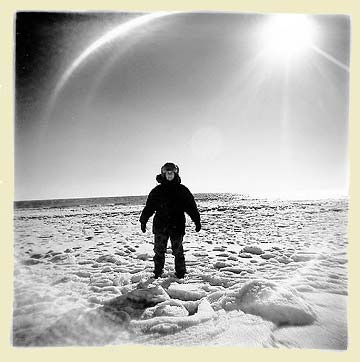
I love this photograph because if she didn't tell us that she was in New Jersey, I think it would be safe to assume that she is somewhere much colder than the east coast of the united states. I want to play with that idea in my photo essay.
0 notes
Text
03/18/2020
Three local Philadelphian photographers I researched: Jill Halloway Sherman, Shawn Theodore, and Jeffery Stockbridge.
Jill Halloway Sherman was born in New York but now lives in Philly. I found her through the Philadelphia Photo Arts Center as she currently has an exhibition there. I thought her “Fabricated World” series was really interesting, as it explores “simplifies observations”. It is interesting to think of observations as simplified because usually, an observation entails a detailed list of whats going on, but from this different perspective, we can look at things with ease. In this series, she photographs places that are empty, which is usually filled with people. In one photograph, she captures two chairs and an umbrella on the beach. Something that is usually filled with people, we look at emptiness. Where did the people go? Are they swimming? Are they taking a walk? Or did they just leave for the day, and the beach chair renters are on their way to collect their items? This is just one photograph from her collection, and the rest are from places around the united states and the world (including Philadelphia).
Shawn Theodore is a photographer based in Philadelphia and captures the identities of black Americans. In his series "Church of Broken Pieces” he explores both African American men and women living in the united states. In this series, the uses of light make his portraits more drastic, showing the viewer, that even in daylight, there is always darkness. I like how he positions his subjects, giving the viewer a range of positions that a bust of a person can be shown. I particularly liked “Summertime, 2016″. It is a portrait of a woman looking away from the viewer wearing a pink hat in front of a pink background. I think the composition of this photograph is very strong. It makes the viewer think if the women were just walking by or purposely turning away from whomever she was talking to.
Jeffery Stockbridge is a Philadelphian photographer who photographs the victims of the opioid crisis in the Kensington area of Philadelphia. He photographs and interviews victims of heroin, giving them a voice to there struggles. He put this collection of photographs in a book called ‘Kensington Blues”. Over a five year period, Stockbridge documented these victims. The opioid crisis is something that is not often talked about, so to see in a creative medium such as photography, I think that it can reach more viewers than just an article in a local newspaper. The viewer can observe a photograph ad read the journal entries attacked, and really get to know a person without judgment. All of the photographs are portraits, taken in their environment and in a studio. I think the ones taken in the person-environment have a stronger tone because it is where they are from, it is what they see every day, it is the place they are trying to heal and recover.
I think being quarantined has allowed me to start thinking about future photo projects but has also restricted from going out, because of the social distancing. I am planning on going into the city soon, hopefully, there will be fewer people walking about the street, which will give my photographs an emptiness feeling, which is something I am always looking for. A failure of mine would be that I am struggling to think of ideas, it probably because I am trying to force them out.
Having access to SJU’s darkroom was a privilege, and now that I cannot work on my photographs, developing them and printing them, will be a setback, but I am hopeful for the future.
0 notes
Text
02/03/20
Three photographers that are currently documenting current events are Ada Trillo, James Estrin, and Kiana Hayeri.
I have been following Ada Trillo's work for a few months now, and I can confidently say that her work is truly inspiring. Trillo came to give a talk at SJU last semester, and you could hear her passion for her work through the tone of her voice. Trillo’s work focuses on human rights issues facing people in and from Latin America. She is currently documenting a caravan of migrants from Honduras to Mexico. Her black and white photographs are truly breathtaking; she puts herself right in their journey and captures their most tragic moments. Her work is truly inspiring; she's not on the sidelines taking photographs, she's right in the middle. She interview the migrants too, and writes down their conversations in a diary, then makes them part of her exhibitions. I would love to know what goes into planning a journey like this, and if she does it all herself or has a team to help her? I think what I take from her is her dedication to taking a photograph. You can tell that she focuses on time management when working on a series, and that is something I would like to get better at.
James Estrin photographs controversial topics in the United States. What caught my eye is that he is the first person to photograph an assisted suicide in Oregan. I think euthanasia or assisted suicide is a hot topic. We learned a lot about it, my philosophy class, last semester. There is passive euthanasia and active euthanasia. Passive euthanasia is when you let the person die, without any medical care, and active euthanasia is when you purposely give a patient medicine to end their life. There is a lot of controversy around this topic, and I think it is important to notice that Estrin was given permission to document this extraordinary act. Many people with living with chronic and long-term illness with a sound mind make that decision, but it is illegal in most states in the U.S. Some people do not want to live the remainder of their life in pain, and want a more comfortable option. Estrin was the first to capture something and gave it to the public. It is very inspiring to see something like that because it makes you think deeper about your photographs and what spin you can put on it to make it your own.
Kiana Hayeri is a photographer from Tehan, Iran. She said that she wants to travel the world until she finds her home. She is very interested in “bridging the gap between language and culture. She doe a lot of work with Afgan women, and spreading awareness on their fight for basic human rights. She does this one series called “Single Mothers for Afghanistan”. She is representing the millions of women in Afghanistan who are raising their children alone. She further discusses that this impacts their physical and mental health; mental health is not something that is talked about in Afghanistan. It is really inspiring to see Hayeri trying to give a voice to these brave women. While looking at her photographs, I find that she uses windows as her source of light. And I think it is very interesting when the light create silhouettes on her subjects, and that is something I would like to play around with more.
I think it is difficult to really send a message through a portrait, so I have been taking photographs of people but changing the depth of field so that their faces are blurred. After printing them, I would like to paint or draw the contour line drawing on them. It is just something I have been thinking about, and I think some mixed media could open more doors for creative thought for future projects.
1 note
·
View note
Text
02/26/20
For this week's blog post, I researched Shirin Neshat from Iran, Youshar Tushar from Bangladesh, and Robin Hammond from New Zealand.
I remember learning about Shirin Neshat's work in an art history class last semester, and I clearly remember how unique her work was. She hand-painted Arabic passages on top of her photographs. At first, I did not like it, I thought it ruined the picture, but after some research, she expresses that it was about her relationship to Iran and her relationship to her Islamic religion. She also explores the relationship between western and eastern cultures in her photographs, which I think is a big theme in a lot of artists' work. I've been so opposed to writing on my photographs, but recently I have been adding my own text. I like handwriting on my photographs more than adding it digitally, I think it makes it more personal.
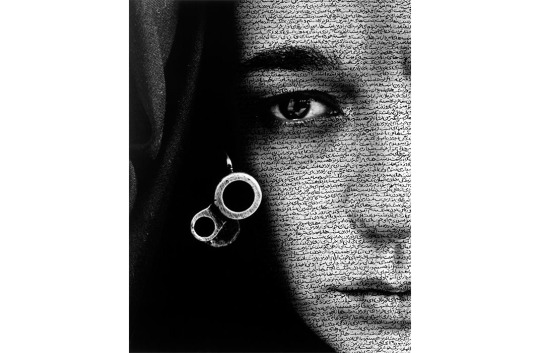
Youshar Tushar is a photographer from Bangladesh. I was attracted to his work because his photographs have a lot of repetition, and what makes it more interesting is the height of perspective. He gets up high to capture large crowds and landscapes that seem to go on forever in the other direction. This has given me the inspiration to get to new heights instead of taking a picture straight on. He took this one photograph of a whole crowd of people praying in the middle of a road. The repetition of bent back on the ground of all sorts of colors is really interesting to look at. And the curve of the road adds a lot of movement, and it's almost like the backs are like stones creating a “cobblestone” road. (I attached a link to the picture)
I have been following Robin Hammond's work through National Geographic for some time now. Hammons is from New Zealand but travels all around the world capturing different people from all sorts of cultures. A lot of the work I've seen by him are portraits of people. He documents human rights issues all around the world. It is really interesting to see how countries inflict punishment on their citizen. In one of his photographs, he captures this man's head sticking out of a fence. The caption of the photograph says “ Abdi Rahman Shukri Ali, 26, has lived in a locked tin shack for two years. Dadaab Refugee Camp, Kenya”. Looking at these photographs gives me chills. This man is soaking his head in the sun, probably trying to warm up after being trapped in a cold tin shed. Comapring the United States to Kenya's laws and enforcement of those laws is very different. The United States has its own issues of jails and prisons, and the rates of incarceration numbers are rising. His work is really inspiring to me because documenting anything can be really challenging, and I would like to get better at taking photographs of strangers.
I think panning is still an issue I am trying to work on. Many of them are blurry, and I know that is kind of the point, but I am having trouble with making the subject less blurry. I've been researching videos on Youtube, and I am going to keep trying until I feel one is successful.
I am also really nervous and excited to be doing portraits. They are something I struggle with, more of asking the stranger if I could take a picture of them, but I feel that I've been building a lot of confidence, and I want to come out of this assignment feeling good about them.
1 note
·
View note
Text
02/18/20
I have been researching Roberto Colacioppo, Stephan Huger, and Gerry O’Leary, three Europen photographers. I found their work through the FEP, the Federation of European Professional Photographers.
I love street photography, and its something that I have been trying to successfully do for the past couple of months, and I think it can be really easy to capture something on the “streets” or it can be incredibly hard if you're trying to create a narrative through it. Robert Colacioppo is a street photographer from Italy. I was drawn to how he captured people walking through a crowded area. I especially liked the picture below. The contrast between the red hat and the lady with the green jacket in the background. I think it was also a successful photograph because he captured their whole body if it was cropped I think it would lose so much potential. The lady in the red hat, the main focus of the photograph, has her head titled down and the shade from her hat really darkens her eye are of the face. It is very mysterious and the viewer is forced to think why her head is down. And in contrast to that, we can see the lady in the green dress with her hat up, which we can conclude that her head is looking up. The whole idea of dark and light, good and bad, comes into play. As someone is having a bad day, someone else is having a good day.

Next, I researched Stephan Huger. I was drawn to his “Close to Heaven” series. This series contains photographs of building, mostly churches, that have extraordinary architecture on the ceiling. He captures the domes, that are filled with painting, patterns, and the abundance of light that come through the windows. I am drawn to repetition and architecture, and I think Huger was successful with the narrative of this story. He said, “ With Close to Heaven, I want to inspire people with extraordinary perspectives, to occasionally perceive something new by looking up and thus to leave everyday life aside for a moment.” I also think these photographs were successful because it was a series, looking at multiples of them at once really support the narrative. I also think the composition of these photographs was very successful, they work really well when centered, making the viewer feel very small in a large place. I like the idea of “Close to Heaven”, because these mural and relief sculptures on the ceiling of churches are based on stories from the bible, and the fact that they are above us gives us the effect that Heaven is above us.
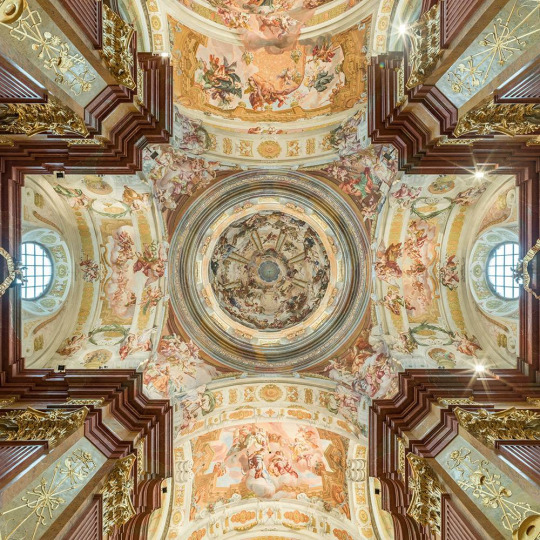
Lastly, I researched Gerry O’Leary, a photographer from Dublin Ireland. I was drawn to his interior architecture photographs and his aerial photographs. A lot of his photographs are vibrant and color helps with his narrative. His interior Architecture series is quite interesting because he captures the places, like malls and libraries without a person in sight. I love that feeling that you're in a large space that is supposed to be filled with people, but they are taken away and you're left feeling empty. Some of the compositions are quite interesting too. The perspective that he shows in some of them are disorienting. He had both, straight on, and more of an aerial view of these places. He also captures aerial photographs of landscapes. I like the ones with rivers because they naturally dividing up the photograph giving it a successful composition. His work is very inspiring because I would also like to capture large spaces with not a person in sight, I think it really tells a strong narrative.
I think this week of night photography was more successful than last week because I got a better understanding of what ISO to use. I am so used to the understanding of film ISO, that the higher the ISO, the more grainer and brighter the image gets, so I was using a higher ISO in my images like 1600 or 6400, but during class, we learned to use ISO 100, the complete opposite. I think it's interesting that it is different from film, photography just gets more complicated!
I agree with the critique I got in class. I agree that I need to watch for printer tones, what it looks like on the screen is not always what it will look like when it is printed on the paper. Being that it was a black and white photo, it is more noticeable when the blacks absorb to other parts of the paper. I am starting to like lightroom more, I think its a tool I will definitely use in the future. I would like to do some graphic design stuff in the future like Barbara Kruger.
0 notes
Text
02/11/2020
Three of my favorite female photographers are Carrie Mae Weems, Diane Arbus, and Cindy Sherman. Carrie Mae Weems is one of my all-time favorite photographers; I even wrote a research paper on her Kitchen Table Series. I actually did something similar to the Kitchen Table Series in high school, before I even knew who she was. I think Weems is exceptional, she is one of the most influential contemporary artists if our time. I'm attracted to the narrative she is trying to tell in her photographs. In her Kitchen Table series, I really felt that she was telling the audience that family is a microscopic society that has its own problems. I also like setting up a narrative with my photographs, specifically exhibiting them in a series. Sometimes I feel a photograph is not strong enough to tell a story and when you have multiple, the viewer can also engage in a more meaningful type of way. The composition of the Kitchen Table Series really adds to the effect of the narrative. The photograph is taken from the opposite side of the table, so its almost like we have a seat at the table watching the events unfolding. All of them are black and white; taken on a large format polaroid camera. When I heard three of them were going to be exhibited at the PMA, I lost it.
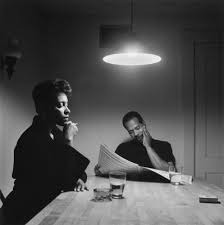
My next favorite photographer is Diane Arbus. I think her portraits are phenomenal. I was really attracted to the tones in her black and white photographs. I think her extreme contrast in the majority of her photographs really adds to the effect. I'm interested in the fact that she tried to represent the marginalized groups in America through her photographs. I think it's interesting that she started off taking photographs of models for magazines and then developed into a more mature subject matter. It takes a lot of guts to ask someone to take their picture. It is something that I am currently struggling with, but I try to ask someone for their picture every time I’m out taking pictures. I think one of my favorite photographs by Arbus is the Triplets in their bedroom. I think I'm attracted to this photograph because if the composition. I think the tree of them centered in front of a black and white wallpaper; the contrast works really well for this photograph. I also like how the three beds are right next to each other and that she crops it just enough so that we see them on the edges. They are welcoming us into their bedroom, such an intimate place. It looks like they are living in close quarters, which adds a slightly claustrophobic feeling to it.
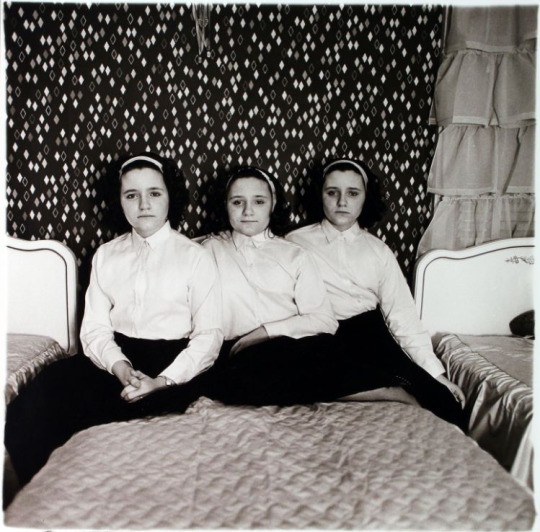
I’d like to conclude with another one of my favorite photographers, Cindy Sherman. She also took a lot of inspiration from Diane Arbus. I always love hearing when artists build off of each other because it just adds to the fact that creativity builds off of creativity. I think one of my favorite things bout Sherman is that many people don't know what she looks like because she is so committed to her work. She is always in a different costume and she is always changing the way her appearance looks for her photographs. Her Untitled Film Series is one of my favorites. She explores how women are represented in film in the 60′s. I like that she used a shutter release cord to take some of her photographs but also asked for help from her family and other photographers. Using a shutter release cord is something I am exploring right now, I would never want someone to take my picture and then I use it as my own unless it is for a collaborative project. One of my favorite photographs from the Untitled Film Still Series is #21. Here she places herself in a city setting dressed in vintage clothing. What I find interesting about this photograph is the composting. It almost looks fake, the perspective is so funky. Skyscrapers are almost always a masculine object/idea. And as they tower over her, she is making a commentary on how men always have the upper hand.

I think one thing I struggled with this week was trying to pan my photographs. Your subject matter is already moving and then moving the camera along with it is tricky. Night photography takes a lot of skill and I always find myself taking photos at night. I am still getting a handle o it, especially when I shoot in film because you need an f/stop bigger than f/1.8, and my one lens only goes to f/4. TO help with that I bought a roll of 3200 iso film. I am excited to see if that should help. Taking night photographs digitally is a different story. With this newer technology, it is possible to get a RAW photograph good enough to be processed in lightroom. I am excited to continue to take photographs at night with my digital camera. Thinking like a photographer falls into different categories. Using the camera itself is like thinking backward. Having to remember that a smaller f stop like f/2 lets in a lot of light and a bigger f/stop like f/16 lets in aq small amount of light. And then combining that with the shutter speed to allow enough light in can be challenging sometimes. Something I find interesting right now is the whole process of putting your photograph through lightroom. I am starting to enjoy the whole process. I am also thinking about making a new website to showcase all my works!
1 note
·
View note
Text
02/04/20
For the longest time, I had a hard time shooting at night. I knew to typically have a high aperture and slower shutter speed. Night photography is something special because it basically captures what a camera typically wants, which is light. I find myself shooting a lot at night because I like the quietness that comes with it, and I think that shows up in my photos. I took the photo below in Philly. I liked what the flash did to the traffic cones, but I feel like I lost some detail in the surrounding areas.

I am really interested in mixed-media, and I like playing with acetate. I love drawing contour lines and placing them on top of images. I was thinking about doing that to some of the photographs that I took at the arboretum.
An artist that I have been recently into is Wataru Yamamoto. I was searching online on how to make homemade or DIY shutter release cords. While searching, Wataru Yamamoto came up. He does this “Drawing a Line” Series, where is in a forset and his homemade shutter release cord is visible to a vanishing point, and you can see him trying to camouflage with his surroundings. I liked his work because of the compositional aspect. I like how he was centered, and in disguise with the brush.
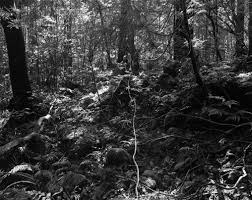
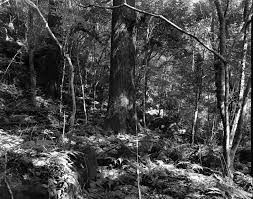
I also just completed a self-portrait series with film, and I am super excited about how they came out. I used a shutter release cable and had to focus it beforehand by reaching out as far as I could with a plastic bag with lettering on it. After doing this on film, I am now thinking about doing it again on digital, and playing with it in lightroom. I think the results would be quite different.

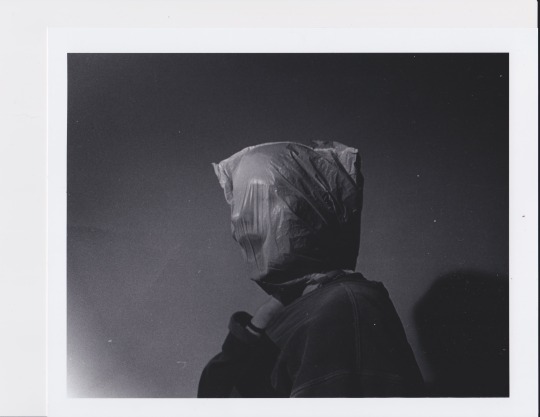
0 notes
Text
1/29/20
In the past year, I have been really focusing on my film photography, and haven't given digital my full attention in a while. To be honest it kind of scares me. I feel that because I haven't learned all the ins and outs of digital photography. To me, using a digital camera is way harder than using a 35mm. I just like how a film camera setting is all there for you, you don't have to go through multiple screens to change the aperture or shutter speed like on a digital camera. I'm afraid I won't be able to get my ideas or narratives represented well in a digital photograph. I have never been trained fully in lightroom, and I am looking forward to that because before I was against editing my pictures, I really like how pure and raw a photograph can ber without changing what it gave you in the first place. But I think having the knowledge and capabilities to alter a photograph is becoming more interesting to me.
Right now I have been really interested in Duane Michals's work. I have never been a fan of putting text on a photograph, but after researching his work, I am drawn to how he sets up his text on a photograph. I am working on a gas station series right now, and I am super excited because I have been in a creative rut. I really like the idea of gas stations, and how so many people come to these places, and all do the same things without really communicating with each other. it is also a place of consumption, not only for the human body but also for your vehicle; there is so much energy moving through. Like Michals, I would like to add my poems and thoughts on gas stations. TO me, a gas station is right where you're supposed to be. If your car runs out of gas, the only thing you need to worry about is filling it right back up. The feeling of being lost is no longer there.
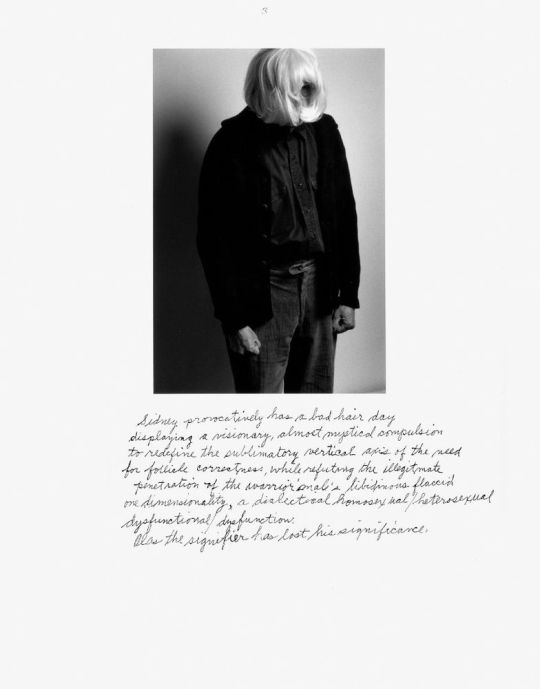
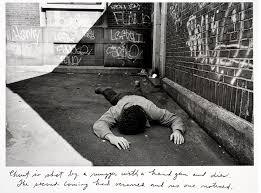
1 note
·
View note